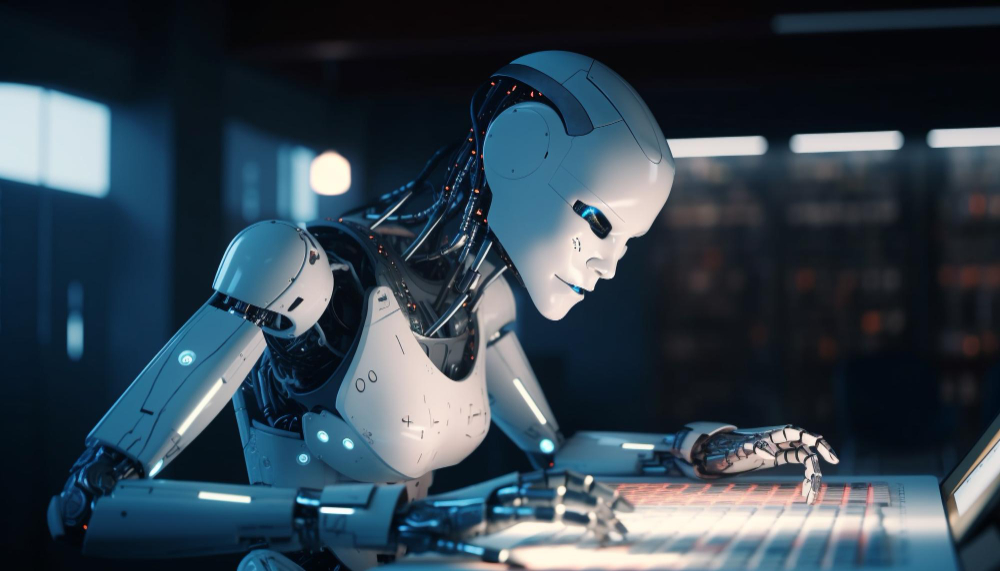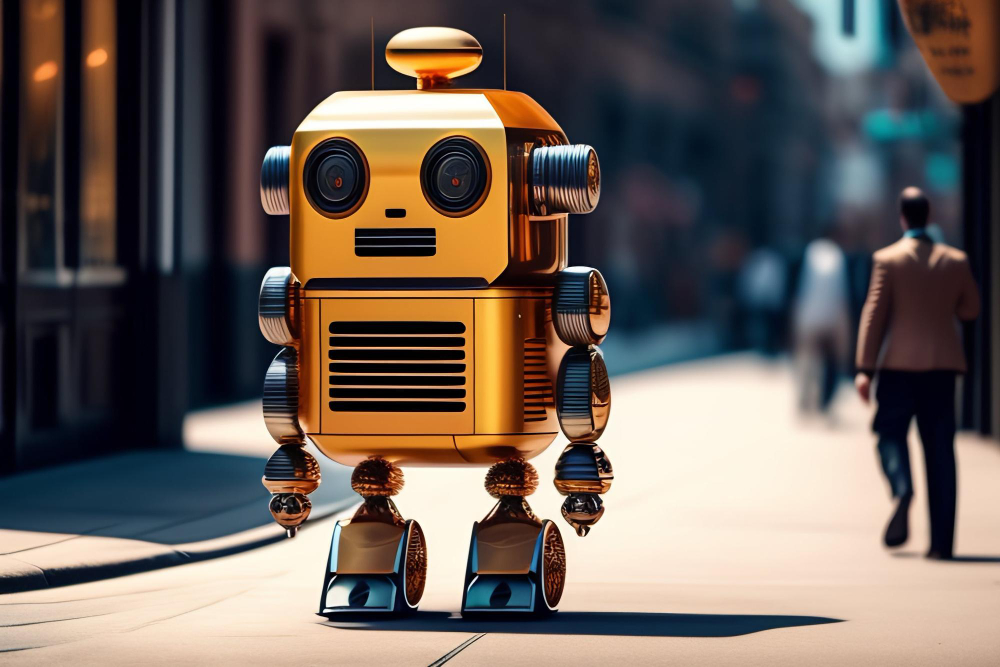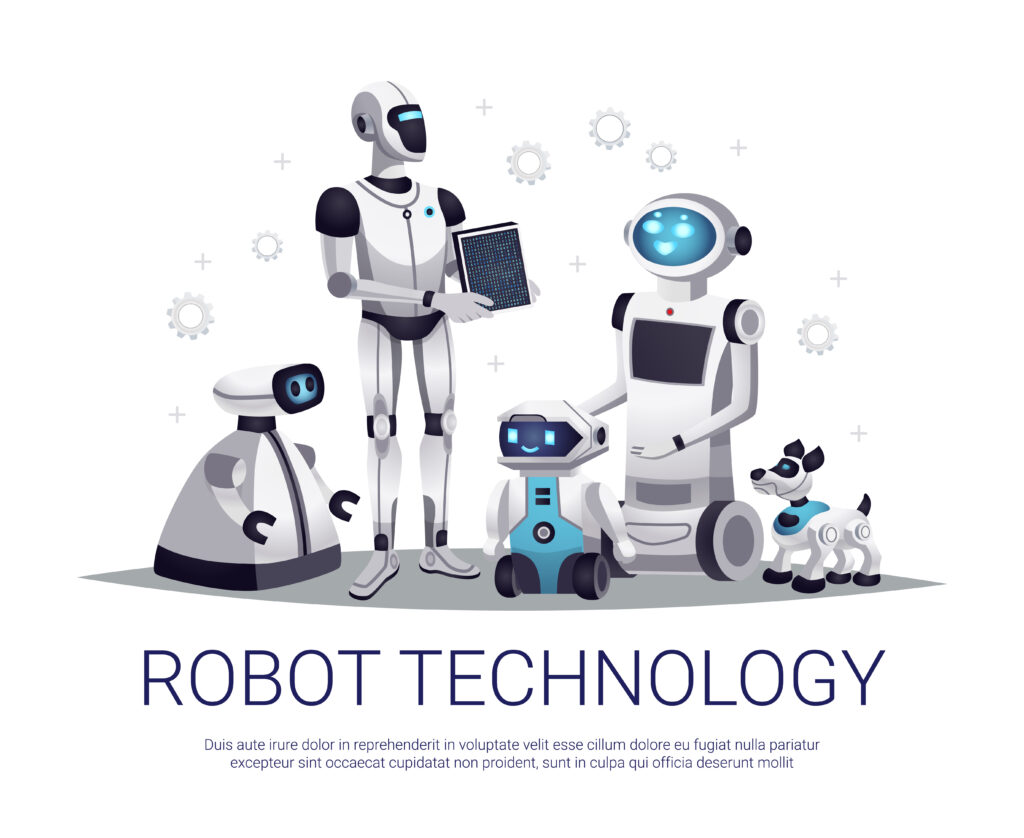- What is MIT’s DribbleBot?
- What are the key features and capabilities of DribbleBot?
- How can MIT’s DribbleBot be used in robotics beyond the football field?
- How does DribbleBot work technically and how does it work?
- What other robotic technologies are similar to MIT’s DribbleBot?
Dive deep into MIT’s DribbleBot, its unique features, and its potential in the vast realm of robotics. Unearth its technical prowess and comparable technologies
DribbleBot by MIT: Pioneering the Next Wave of Robotic Innovations

In the ever-evolving landscape of robotics, certain innovations stand out, marking significant leaps in the capabilities and potential applications of machines. One such groundbreaking development is the DribbleBot, a brainchild of the esteemed researchers at the Massachusetts Institute of Technology (MIT).
While its name might suggest a playful engagement with soccer, the implications of DribbleBot’s design and functionality extend far beyond the confines of a sports field. This robot, with its intricate blend of advanced algorithms, sensor technologies, and mechanical prowess,
exemplifies the future trajectory of robotics. It not only challenges our understanding of machine interaction with dynamic environments but also heralds a new era where robots can undertake complex, real-time tasks across diverse domains.
As we delve deeper into the intricacies of DribbleBot, we will uncover the nuances of its design, its broader significance in the robotics sector, and the transformative potential it holds for industries worldwide.
What is MIT’s DribbleBot?
MIT’s DribbleBot represents a groundbreaking advancement in the realm of robotics. Developed by researchers at the Massachusetts Institute of Technology, this robot is designed with the unique capability to dribble a soccer ball with precision. However, its significance extends far beyond the soccer field. DribbleBot embodies a fusion of advanced algorithms, sensor technologies, and mechanical design, allowing it to interact with dynamic environments in real-time.
This innovation not only showcases the potential for robots to engage in complex physical tasks but also hints at broader applications in industries where adaptability and real-time decision-making are paramount.
As robotics continues to evolve, DribbleBot stands as a testament to the potential of merging sports, science, and technology to push the boundaries of what machines can achieve.
Key Features and Characteristics of DribbleBot

The realm of robotics has witnessed numerous innovations, but few have garnered as much attention and intrigue as MIT’s DribbleBot. This robotic marvel, while initially conceptualized around the simple act of dribbling a soccer ball, encapsulates a myriad of advanced features and characteristics that set it apart in the world of robotics. Let’s delve into the primary functionalities and unique attributes of DribbleBot.
- Advanced Sensory Integration: At the heart of DribbleBot’s prowess is its sophisticated array of sensors. These sensors, working in tandem, allow the robot to perceive its environment in real-time, enabling it to interact with dynamic objects, such as a moving soccer ball, with unparalleled precision.
- Real-time Decision-making Algorithms: DribbleBot is equipped with cutting-edge algorithms that facilitate instantaneous decision-making. This capability ensures that the robot can adapt and respond to changes in its environment, be it the unpredictable bounce of a ball or an obstacle in its path.
- Mechanical Design Excellence: The physical design of DribbleBot is a testament to engineering ingenuity. Its structure is optimized for agility, balance, and precision, ensuring that it can execute complex maneuvers while maintaining stability.
- Adaptive Learning Capabilities: Beyond its immediate functionalities, DribbleBot possesses the ability to learn from its interactions. This adaptive learning mechanism ensures that the robot continually refines its responses, leading to improved performance over time.
- Versatility in Application: While its initial demonstration centered around soccer, the underlying technologies within DribbleBot have broader implications. Its sensory and algorithmic capabilities make it a potential candidate for tasks that require real-time interaction and adaptability, from industrial applications to healthcare.
- Energy Efficiency: In an age where sustainability is paramount, DribbleBot’s design emphasizes energy efficiency. Its mechanisms are optimized to consume minimal power without compromising performance, making it suitable for prolonged operations.
In conclusion, DribbleBot, with its fusion of advanced sensory technology, algorithmic brilliance, and mechanical design, represents a significant leap in the capabilities of robotic systems.
Its ability to interact with dynamic environments, learn from its experiences, and adapt in real-time positions it at the forefront of robotic innovations.
As we continue to explore the potential applications of such technologies, DribbleBot serves as a beacon, illuminating the transformative possibilities that lie ahead in the confluence of robotics, artificial intelligence, and human ingenuity.
How MIT’s DribbleBot can be used in robotics beyond the football field?
Beyond the Soccer Field: The Broader Applications of MIT’s DribbleBot in Robotics
MIT’s DribbleBot, while initially conceptualized and demonstrated as a soccer-dribbling marvel, holds potential that extends far beyond the confines of a sports arena. Its intricate blend of sensory technology, real-time decision-making algorithms, and adaptive learning mechanisms positions it as a versatile tool with a myriad of applications in the broader field of robotics. Let’s explore some of the potential avenues where DribbleBot’s capabilities can be harnessed:
- Industrial Automation: In manufacturing settings, the ability to interact with dynamic environments is crucial. DribbleBot’s real-time sensory and decision-making capabilities make it an ideal candidate for tasks such as assembly line operations, quality control, and even complex tasks like product sorting based on real-time data.
- Healthcare: The precision and adaptability of DribbleBot can be leveraged in medical settings. Whether it’s assisting in surgical procedures, navigating hospital corridors to deliver supplies, or aiding in patient care, its capabilities can enhance efficiency and accuracy in healthcare environments.
- Disaster Response: In situations where environments are unpredictable and potentially hazardous, robots like DribbleBot can play a pivotal role. Its ability to adapt and respond to dynamic changes makes it suitable for search and rescue operations, damage assessment, and even delivering essential supplies in disaster-stricken areas.
- Agriculture: Modern agriculture is increasingly relying on technology for precision farming. DribbleBot, with its sensory and adaptive learning capabilities, can be employed for tasks like crop monitoring, pest control, and even automated harvesting.
- Research and Exploration: In domains like marine biology or space exploration, where human intervention is limited due to hostile environments, DribbleBot’s capabilities can be harnessed. Its ability to interact with dynamic surroundings can aid in data collection, sample retrieval, and exploration in challenging terrains.
- Education and Training: DribbleBot can serve as an educational tool, assisting in robotics and engineering curricula. Its design and functionalities offer practical insights into advanced robotics, making it an invaluable asset for hands-on learning and research.
In essence, while DribbleBot’s initial demonstration on the soccer field showcased its immediate capabilities, its underlying technologies hold transformative potential for various sectors. As the field of robotics continues to evolve, innovations like DribbleBot underscore the limitless possibilities that lie at the intersection of technology, design, and human aspiration.
How does DribbleBot work technically and how does it work?
The Technical Workings of DribbleBot: A Deep Dive
DribbleBot, a pioneering innovation from MIT, is a testament to the advancements in robotics, artificial intelligence, and mechanical engineering. While its primary demonstration revolves around dribbling a soccer ball, the underlying technologies that power DribbleBot are intricate and multifaceted. Let’s delve into the technical aspects of how DribbleBot operates and the mechanisms that enable its functionality.
- Advanced Sensory Integration:
- Sensors: DribbleBot is equipped with a range of sensors, including optical, ultrasonic, and tactile sensors. These sensors continuously gather data about the robot’s environment, particularly the position and movement of the soccer ball.
- Real-time Data Processing: The data from these sensors is processed in real-time, allowing DribbleBot to make instantaneous decisions about its next move.
- Algorithmic Decision-making:
- Predictive Algorithms: DribbleBot uses predictive algorithms to anticipate the ball’s trajectory. This prediction enables the robot to position itself optimally for dribbling.
- Adaptive Learning: Machine learning mechanisms allow DribbleBot to learn from its interactions, refining its responses over time. This adaptability ensures improved performance with each dribbling session.
- Mechanical Design:
- Agile Movement: DribbleBot’s mechanical structure is designed for agility. Its wheels or locomotion mechanisms are optimized for rapid directional changes, essential for effective dribbling.
- Ball Interaction Mechanism: Specialized appendages or mechanisms enable DribbleBot to maintain contact with the ball, ensuring controlled dribbling.
- Control Systems:
- Feedback Loops: DribbleBot operates on feedback loops, where the data from sensors is continuously fed back into the system. This feedback ensures that the robot can adjust its actions based on real-time interactions.
- Central Processing Unit (CPU): The robot’s CPU coordinates all activities, from data processing and decision-making to executing motor commands.
- Energy Management:
- Efficient Power Consumption: DribbleBot’s design emphasizes energy efficiency. Its operations are optimized to ensure minimal power consumption without compromising performance.
- Battery and Power Systems: Advanced battery systems provide DribbleBot with prolonged operational capabilities, ensuring it can function effectively during extended sessions.
In essence, DribbleBot operates through a harmonious integration of sensory data collection, real-time data processing, algorithmic decision-making, and precise mechanical execution.
Its ability to dribble a soccer ball is not just a testament to its immediate capabilities but also showcases the potential of modern robotics when multiple advanced technologies converge.
As we continue to push the boundaries of what robots can achieve, DribbleBot stands as a beacon of innovation, offering a glimpse into the future of robotics.
What other robotic technologies are similar to MIT‘s DribbleBot?

Robotic Technologies Analogous to MIT’s DribbleBot
MIT’s DribbleBot, with its unique blend of sensory integration, real-time decision-making, and mechanical agility, is a standout innovation in the realm of robotics. However, the broader field of robotics has witnessed several groundbreaking developments that, in various ways, echo the capabilities or objectives of DribbleBot. Let’s explore some of these analogous robotic technologies:
- Boston Dynamics’ Spot:
- Description: Spot is a versatile robot designed for a range of applications, from research to industrial inspection.
- Similarities: Like DribbleBot, Spot boasts advanced sensory systems and real-time processing capabilities, allowing it to navigate complex terrains and interact with its environment.
- RoboCup Robots:
- Description: The RoboCup initiative promotes the development of soccer-playing robots. Teams from around the world design robots to compete in soccer matches.
- Similarities: These robots, like DribbleBot, focus on ball interaction, movement precision, and real-time decision-making to play soccer.
- ANYmal by ANYbotics:
- Description: ANYmal is a quadrupedal robot designed for a variety of tasks, including inspection, research, and entertainment.
- Similarities: ANYmal’s ability to adapt to different terrains and its integration of sensors to perceive its environment resonate with the capabilities of DribbleBot.
- Toyota’s T-HR3 Humanoid Robot:
- Description: T-HR3 is Toyota’s humanoid robot designed to mirror human movements, allowing for applications in healthcare, disaster response, and more.
- Similarities: The emphasis on real-time sensory feedback and precise movement control in T-HR3 mirrors some of the technical aspects of DribbleBot.
- Robotic Goalkeeper by EPFL:
- Description: Researchers at EPFL developed a robotic goalkeeper that can block soccer balls with remarkable precision.
- Similarities: Like DribbleBot, this robot focuses on soccer interactions, utilizing real-time data processing and rapid movement to achieve its objective.
While each of these robotic technologies has its unique features and applications, they all share a common thread of innovation, emphasizing sensory perception, real-time processing, and mechanical precision. As the field of robotics continues to evolve, these technologies, alongside DribbleBot, highlight the vast potential and diverse applications of modern robotic systems.
insightfull resource
- Top 10 Robotics Trends & Innovations in 2024
- StartUs Insights
- Dive into the future of robotics with this comprehensive guide that highlights the most promising trends and innovations set to shape the industry in 2024.
- Innovations in Robotics: Latest Trends and Technologies
- LinkedIn Article
- Explore the latest breakthroughs in robotics, from algorithms that allow robots to explain their actions to the broader implications for various industries.
- 7 Biggest Robotics Trends & Predictions for 2022
- Meili Robots
- Get a glimpse into the immediate future of robotics with predictions and trends that are shaping the industry, from Robotic Process Automation to Robotics as a Service.
- Unlocking the Industrial Potential of Robotics and Automation
- McKinsey & Company
- Delve into the challenges and opportunities that industries face with the rise of robotics and automation, and how these technologies are revolutionizing various sectors.
- The Future Of Robotics Over The Next Few Years